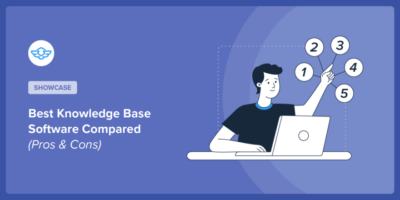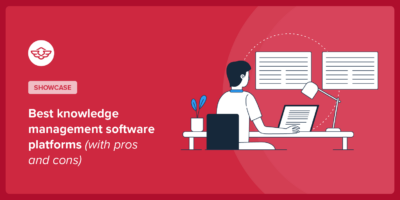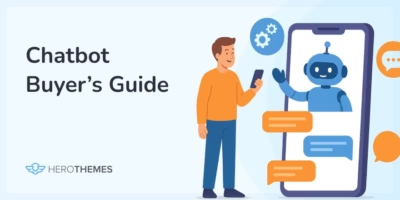12 Practical Chatbot Use Cases and Examples Across Industries
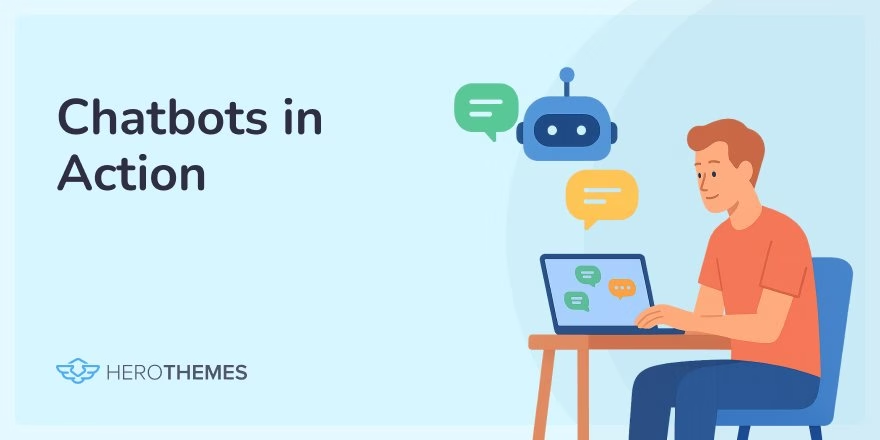
Chatbots have evolved from basic scripts into intelligent assistants that operate on websites, apps, and messaging platforms.
These assistants can answer questions, qualify leads, schedule appointments, and deliver personalized shopping advice without human interference.
That’s why most businesses are investing in chatbots rather than hiring new employees.
In this guide, I will highlight 12 chatbot use cases from various industries with examples, which you can potentially use for your own business to automate and streamline some tasks.
In This Guide
- What is Chatbot?
- Best Chatbot Use Cases and Examples
- 1. Chatbots for Customer Support and FAQ
- 2. Chatbots for eCommerce Sales and Shopping Assistance
- 3. Chatbots for Sales Lead Generation and Qualification
- 4. Chatbots in Banking and Finance
- 5. Chatbots in Healthcare
- 6. Chatbots for Travel and Hospitality
- 7. HR and Recruiting Chatbots
- 8. IT Helpdesk and Internal Support Chatbots
- 9. Social Media and Messaging Platform Chatbots
- 10. Real Estate and Property Search Chatbots
- 11. Appointment Scheduling and Booking Bots
- 12. Survey and Feedback Collection Chatbots
- 1. Chatbots for Customer Support and FAQ

We rigorously test and research every product that we recommend through HeroThemes. Our review process. We may also earn a commission if you make a purchase through our links.
What is Chatbot?
A chatbot is a computer program that simulates conversation with people, typically via text or voice. Classic bots follow scripted flows, while modern versions rely on conversational artificial intelligence (AI), natural-language processing, and, lately, generative AI that can quickly draft fluid answers.
The 9 Core Types of Chatbots
- Menu or Button Chatbot: Guided flows with quick-reply buttons are perfect for eCommerce returns and basic FAQ pages.
- Keyword or Rule-Based Chatbots: These chatbots scan user input for triggers, such as “reset password,” and provide automated responses. They are cheap and reliable, and still handy for one-purpose microsites.
- AI/NLP Chatbots: Natural language processing extracts intent and generates dynamic responses.
- Generative Chatbots: Powered by large language models (ChatGPT, Claude, etc.) to craft human-like replies.
- Voice Assistants: For example Alexa, and Google Assistant.
- Social-Messaging Chatbots: Bots that live in WhatsApp, Facebook Messenger, or Instagram DMs.
- Contextual Chatbots: Integrate with CRMs to pull order status, subscription level, or past interactions before replying.
- Transactional / Action-Oriented Chatbots: These bots perform tasks such as scheduling deliveries, issuing refunds, and changing flights.
- Hybrid Assistants: Blend rule-based flows, NLP, and human hand-off.
Best Chatbot Use Cases and Examples
1. Chatbots for Customer Support and FAQ
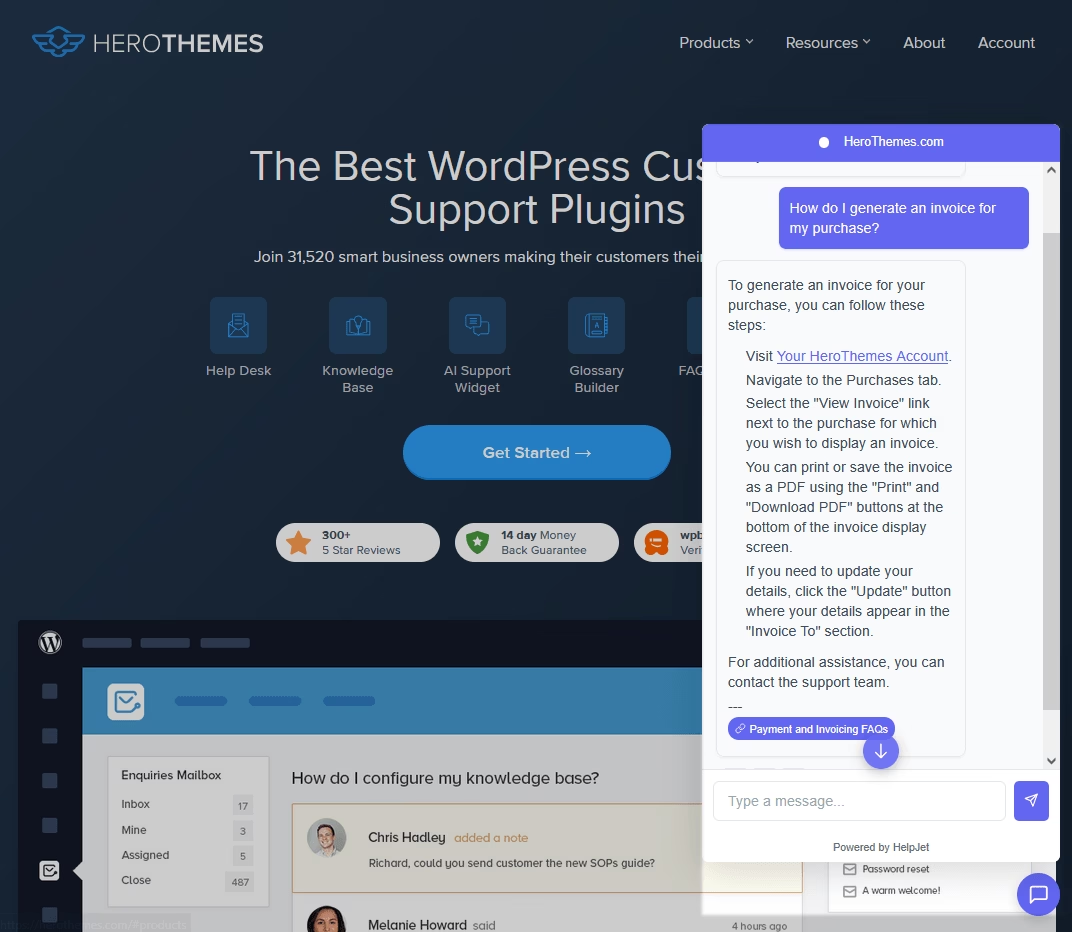
When you think of chatbots, customer support chatbots often come to mind first.
These bots are designed to handle common questions and automate regular tasks on websites, apps, or help portals.
You will find these on most service or product-based websites, either on the entire website or in the self-service section, with a small sticky widget to access chatbot.
Chatbot Use Cases in Customer Service:
- Answer FAQs (like “How do I reset my password?”)
- Check order status
- Guide users through troubleshooting
- Point out at specific guide from website
- Connect with the support team
- Gather customer information, such as order numbers and account details, so that agents can offer fast service when needed.
Things to Watch Out:
- Chatbot should be smart enough to hand off support to real agents (or ask for creating tickets instead) when things go wrong.
- Monitor the chats for accuracy and update the bot’s knowledge as needed.
- Set up bot to answer only questions related to your products (Especially with AI chatbots)
- Keep the language simple and anchor replies with verified data.
This frees up agents to focus on critical problems. Since most of us want help right away, chatbots in support are a no-brainer.
With a WordPress plugin like Heroic Knowledge Base, you can easily create a chatbot trained on your content with AI integration for human-like responses and understanding.
2. Chatbots for eCommerce Sales and Shopping Assistance
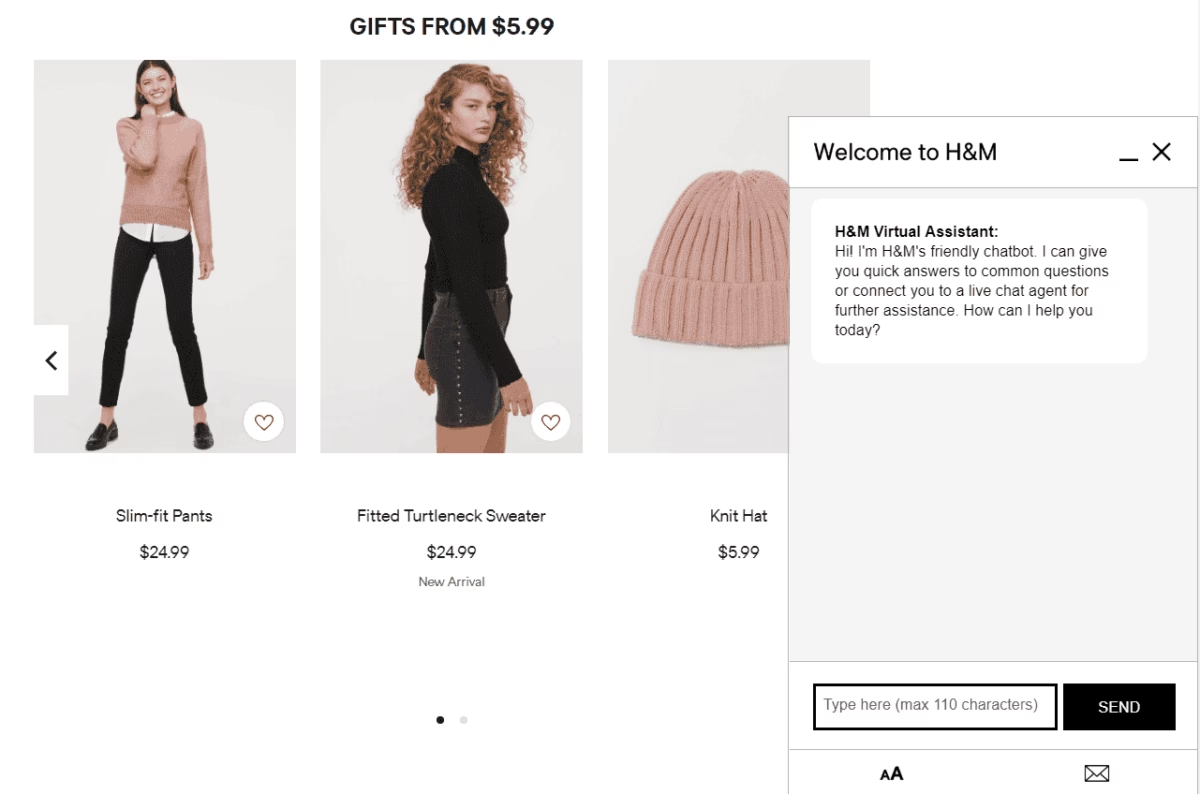
Online shops use chatbots as virtual assistants to guide shoppers and close sales.
For example, H&M’s style bot, which asks you what kind of outfits you like and then recommends clothes accordingly.
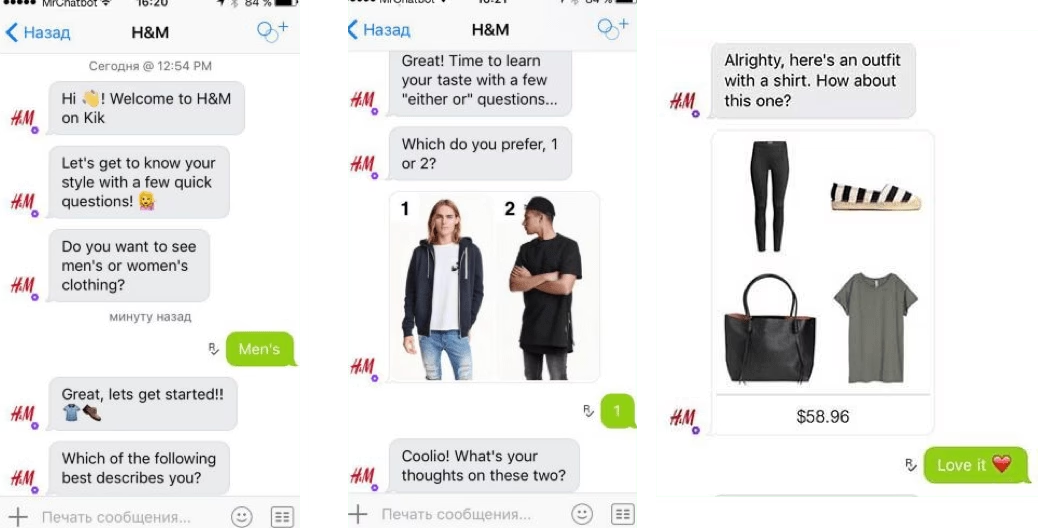
Similar kinds of uses of chatbots are very common on retail sites. You’ll see a chat window asking, “Looking for anything in particular?” These bots can ask questions, suggest products, and add items to your cart.
Domino’s also uses an ordering chatbot, but you can place an order by simply texting normally.
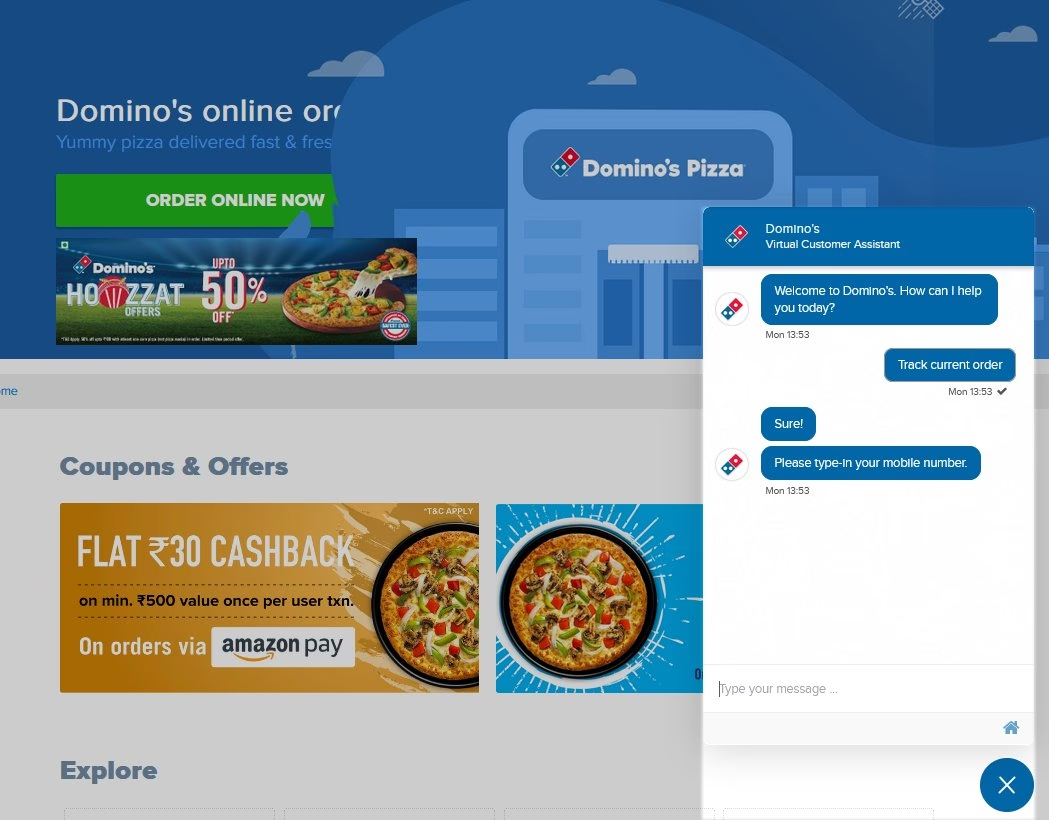
Chatbot Use cases in eCommerce:
- Give product recommendations based on user preferences
- Inform about stock or sizes
- Apply coupons or promo codes
- Help complete the checkout without leaving the chat
- Answer frequent questions
Key Features:
- Often trained on huge product catalogs to show matching items.
- Access to user browsing history.
- Many provide quick options, such as “See Similar” and “Add to Cart,” making them easy to use on mobile devices.
Tips for Using Chatbots on eCommerce Sites:
- Keep it conversational. A bot that simply spits out product codes or recites shipping rules verbatim may come off as robotic.
- Don’t push too hard. No one likes a bot that just nags, “Buy now!”
- Use chatbot to offer help and initiate conversations.
- Include a human fallback for complex questions.
- Sync chatbot with stock levels, sending someone to buy a sold-out item is frustrating.

Explore: Best eCommerce Chatbots for 2026
3. Chatbots for Sales Lead Generation and Qualification
Many companies use chatbots not just to answer questions but to proactively engage site visitors and capture leads.
For instance, a B2B SaaS website could use a friendly bot to start conversations with visitors and potentially convert them into leads.
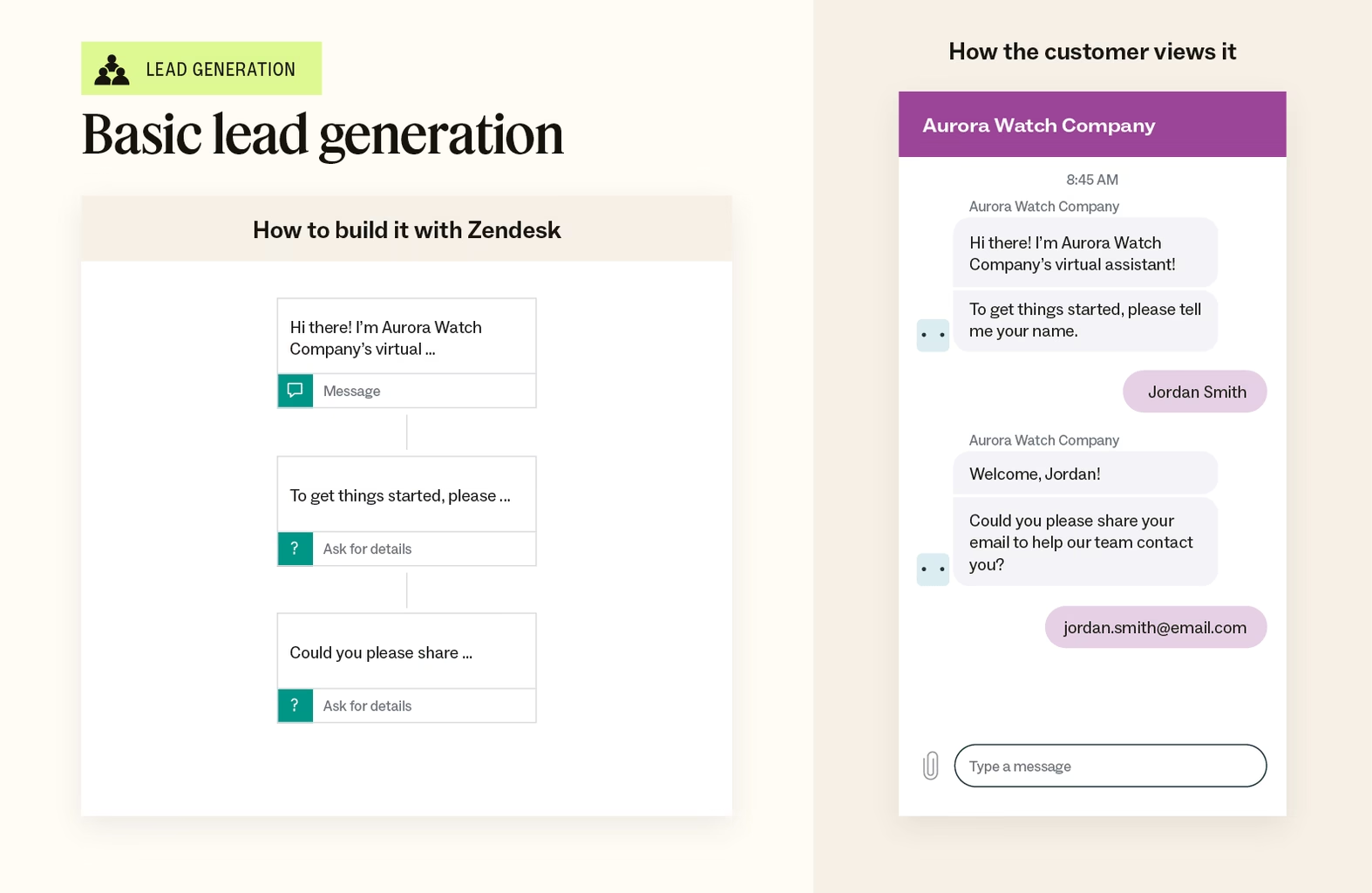
Hi there! Are you interested in our free demo?
You might have seen this before.
These chatbots are used to qualify visitors by asking short questions. Based on the responses, the chatbot either schedules a call with a sales representative or directs the user to relevant product information.
Key Features:
- These bots mostly use conditional logic, or keyword-based triggers.
- Has strong integration with your CRM or email tool.
- It provides personalized responses.
Tips for Using Chatbots for Lead Generation:
- Don’t spam, and avoid making the bot sound pushy.
- The key is context and timing. Better to phrase it as help: “Need a hand finding the right plan?” rather than a hard sell.
- Always allow an easy exit: “No, thanks” should close the bot without annoyance.
Lead generation is becoming a common use case for chatbots. In my opinion, it’s definitely better than annoying pop-ups or filling out long forms.
4. Chatbots in Banking and Finance
Mobile banking chatbots are now very common to help customers with account info and transactions.
A famous example is Bank of America’s Erica, an AI assistant in the mobile app.
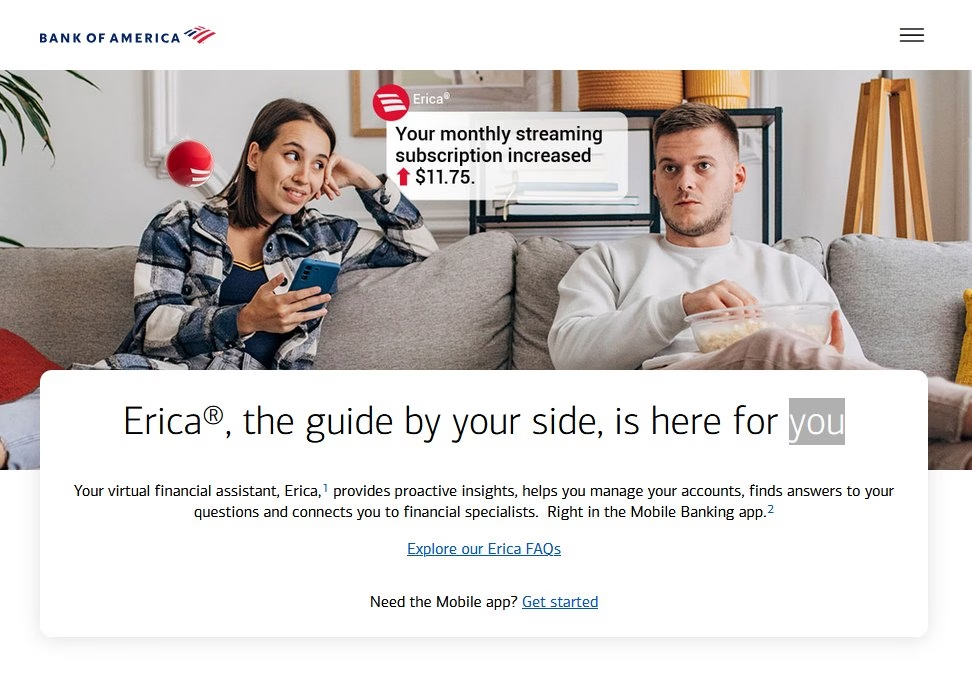
Erica can answer common questions such as “How much money is left in my checking account?” and “Pay my last bill.” In fact, Erica has handled over two billion interactions and resolved about 98% of queries as of 2025.
Use Cases of Chatbot in Banking and Finance:
- 24/7 availability with personalized assistance.
- Offer account related services such as balance checks, transaction history, and account summaries on demand.
- Provide information on loans, credit cards, savings, and investment products.
- Natural language understanding to better understand and answer customer inquiries.
- Integration with CRM/Banking Systems
Ensure that your banking chatbot employs robust authentication and security measures. For example, chatbots in this sector should only share account information with logged-in users or offer other services after verifying the user’s account PIN or OTP.
5. Chatbots in Healthcare
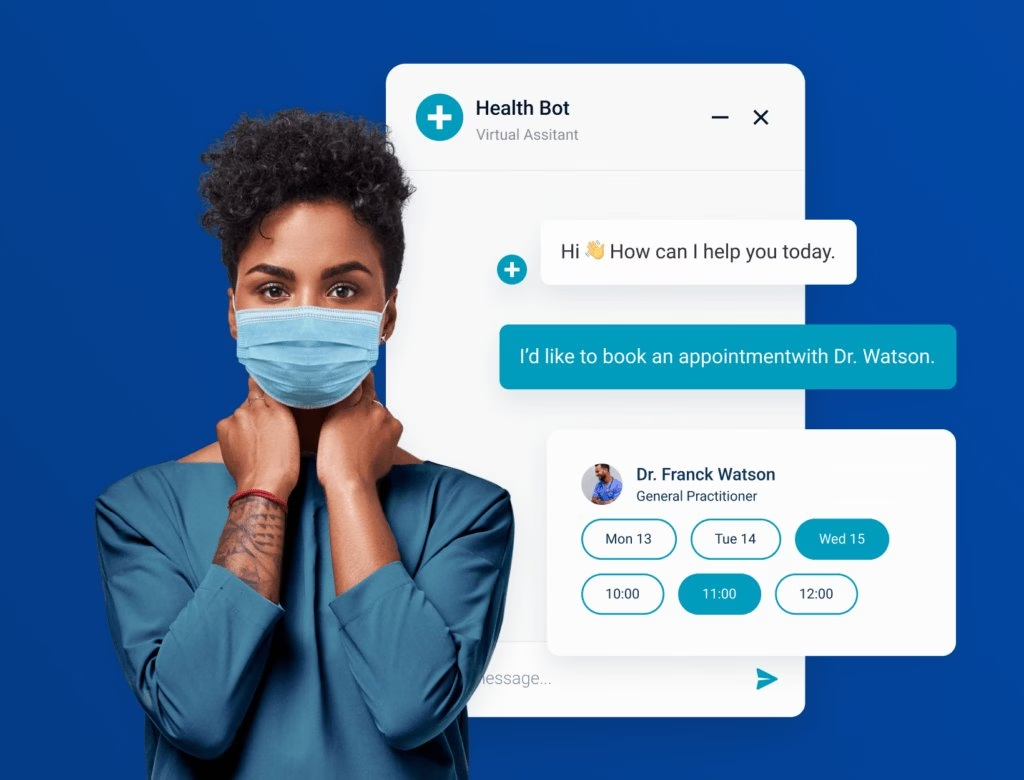
In healthcare chatbots are used for everything from booking appointments to symptom triage.
For example, with these chatbots, you can talk about symptoms, and possibly the bot will suggest possible causes or next steps.
Key Use Cases of Healthcare Chatbots:
- Guiding patients through questions to assess symptoms and suggest next steps.
- Appointment scheduling and reminders
- Medication reminders and management
- Mental health support by offering mood check-ins, coping exercises, and guided CBT techniques.
- Providing reliable information about conditions, treatments, and hospital policies.
- Data collection for clinical research
This is a high-stakes area. A wrong suggestion could hurt someone, as a result these bots always rely on a quality knowledge base, and must always give disclaimers (“I am not a doctor”) and push to human care when needed.
6. Chatbots for Travel and Hospitality
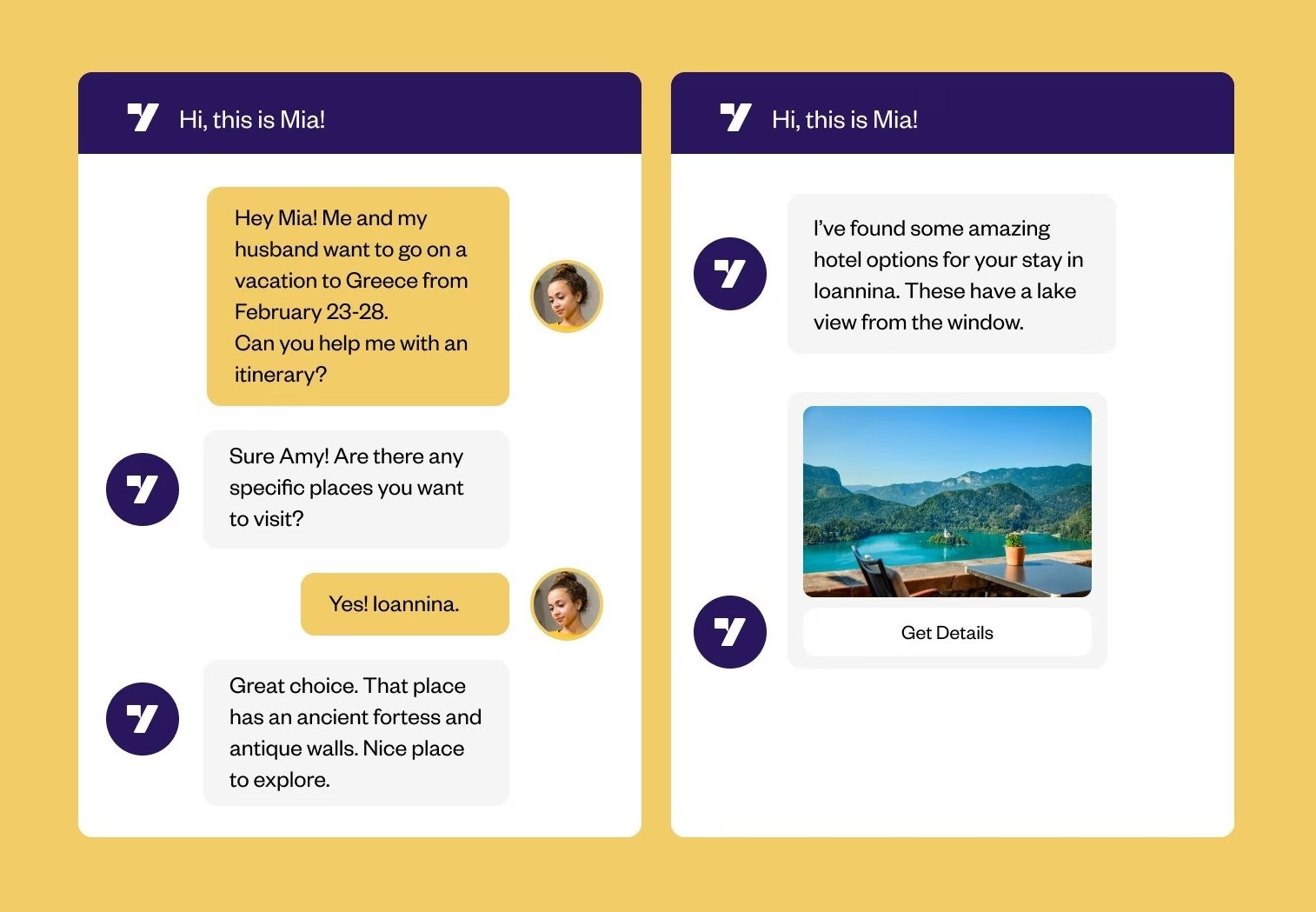
Travel websites and airlines also heavily use chatbots to streamline bookings and customer service.
Chatbot Use Cases in Travel and Hospitality:
- Assist with bookings. This includes helping customers search for, compare, and reserve flights, hotels, and rental cars.
- Provide real-time updates
- Used for 24/7 customer service, with multilingual support.
- Personalized recommendations based on activities, preferences and past bookings.
- Help promote upgrades, add-ons (extra luggage, room upgrades, tours), and packages.
- Feedback collection
Customers get confused when the bot quotes an outdated price or fails to recognize a schedule change. Which is the biggest problem with travel chatbots.
This requires strong infrastructure and capabilities, which makes it costly.
7. HR and Recruiting Chatbots
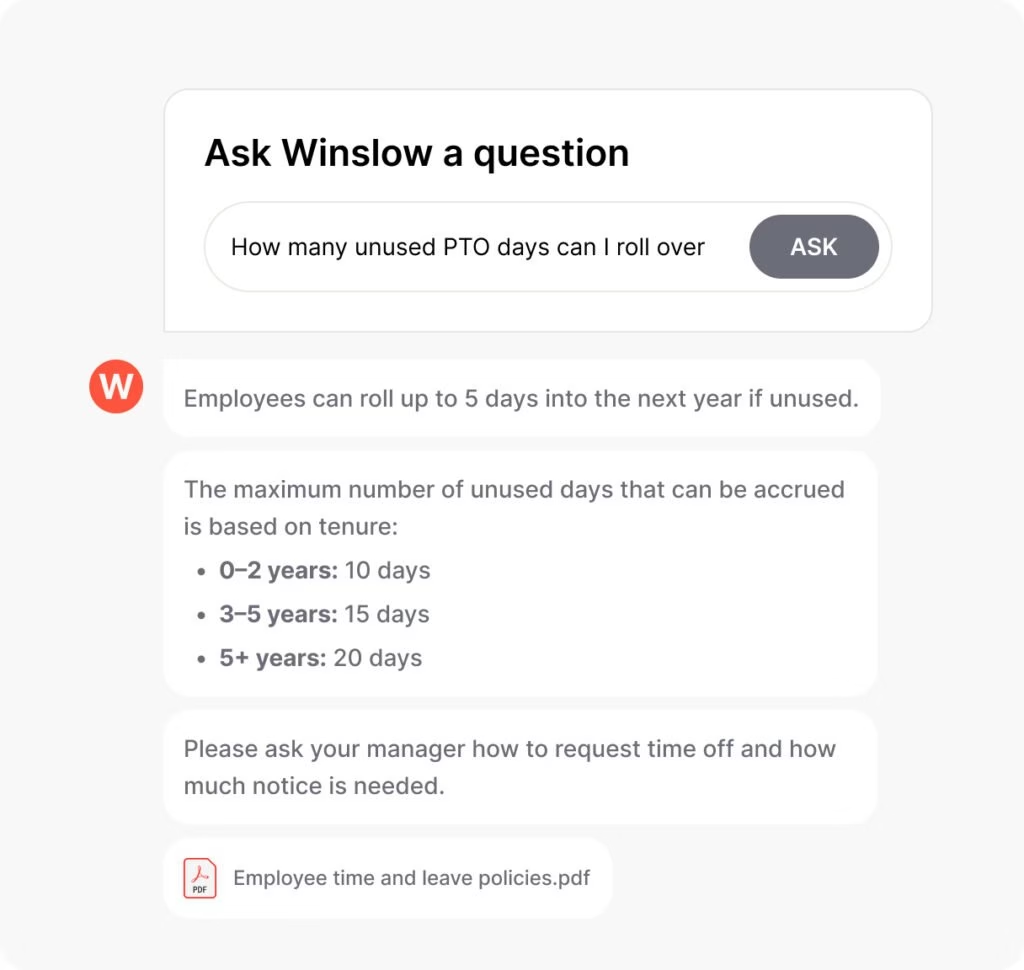
Chatbots in HR (human resource) are all about instant answers.
Suppose a candidate applies on a company’s career page, a bot can immediately greet them and check basic criteria (eligibility, resume details).
Furthermore, it can filter out potential candidates and streamline the recruitment process.
Chatbot Use Cases in HR and Recruiting:
- Pre-qualify applicants with automated skill and experience questions.
- Help with onboarding by sharing documents, policies, and checklists.
- Coordinate the interview and scheduling processes.
- Multi-channel support. For example, a Slack bot to which employees can chat with for support.
- Internal surveys and feedback
- Guide employees through resignations, exit interviews, and final settlements.
8. IT Helpdesk and Internal Support Chatbots
Similar to offering customer support through a chatbot, it can also be used to provide internal support and make the process of finding information easier.
This reduces frustration of finding information, and reaching out to HR for the support.
Chatbot Use Cases for Internal Support:
- IT support automation such as password resets, troubleshooting network issues, or guiding through software installations
- HR-related assistance including policy clarifications, payroll details, leave balances, and benefits information.
- Knowledge base navigation to quickly find SOPs, and other documentation.
- Employee onboarding support
- Employee surveys and feedback collection
Use natural language understanding tools, such as the Heroic AI Assistant, to create a robust internal chatbot that provides reliable support and automation.
9. Social Media and Messaging Platform Chatbots
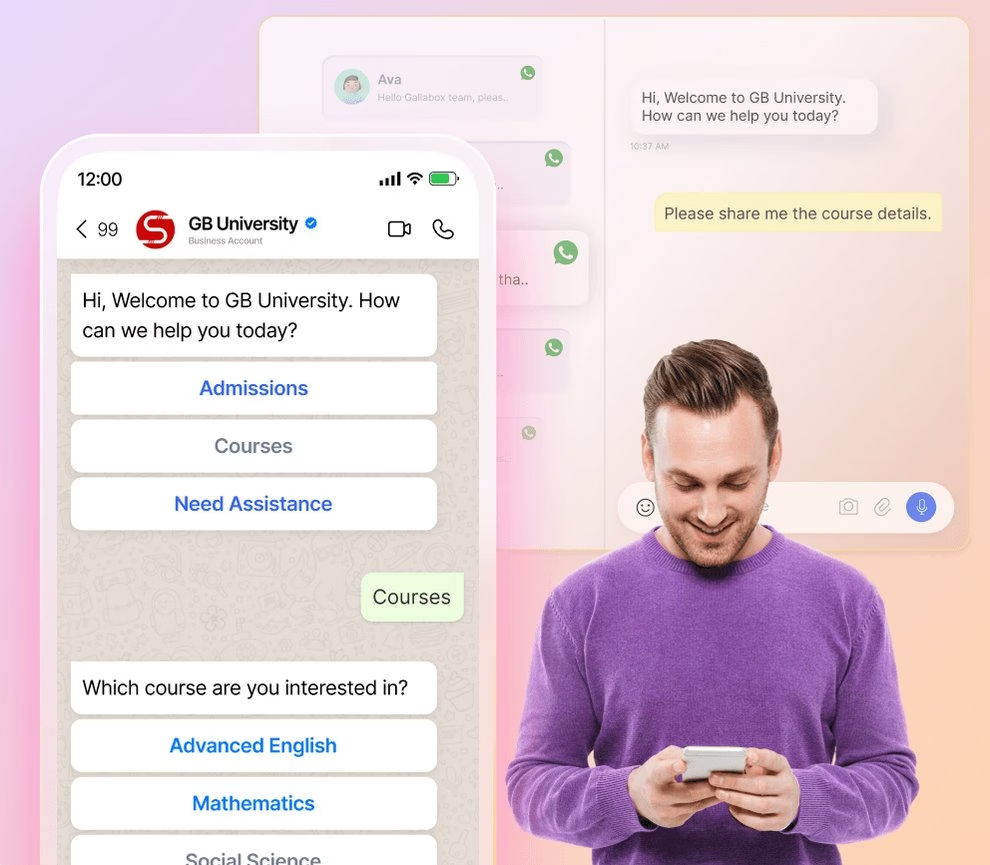
You can use bots to automate customer service processes by integrating them with messenger apps like Facebook Messenger, WhatsApp, and Telegram.
For example, notice how your WhatsApp becoming a customer support channel?
Companies like Amazon use messaging and social media platforms to provide customer support. With the Amazon bot, you can track or cancel your order and perform many other actions without accessing their website or contacting a support agent.
These are primarily rule-based chatbots with a small amount of NLP to minimize costs without sacrificing quality.
Key Use Cases of Social Media and Messaging Chatbots:
- To offer better customer service by accessing messenger platforms like WhatsApp (which can be easily accessed via mobile apps compared to web-based support) to offer customer support.
- Lead generation and qualification
- Order tracking and delivery updates
- Marketing and promotional campaigns
- Appointment booking and reminders for services, demos, or reservations without leaving the chat platform.
- Alerts for urgent notifications
Messaging platforms like WhatsApp are becoming more like social media every day, with features like short videos and groups. You know how beneficial social media can be for promoting your products and services.
If you own an eCommerce business, especially one that sells physical products, using a messenger-based chatbot to provide delivery-related support and keep in constant touch with customers makes sense.
10. Real Estate and Property Search Chatbots
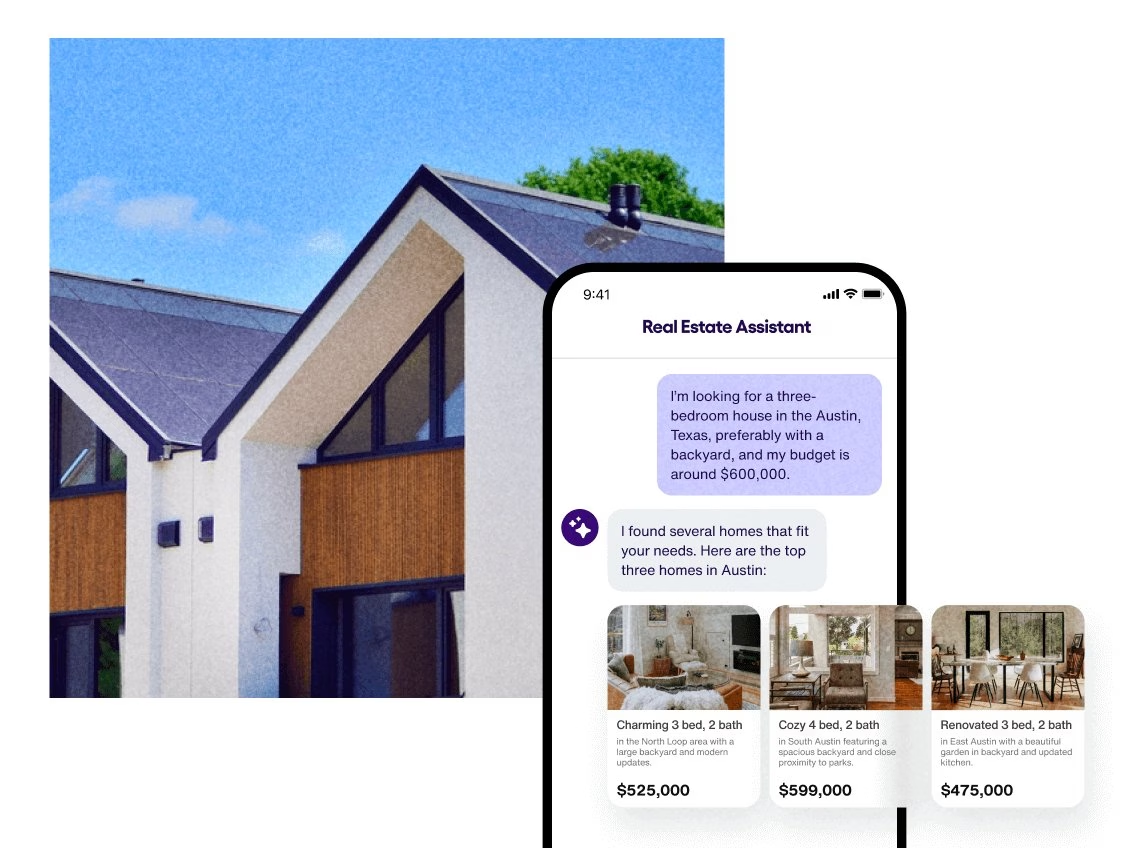
Real estate companies use chatbots to streamline property searches and client communication.
Real estate chatbots can communicate with customers to get details like bedroom requirements, budget or move-in date, and then display matching listings.
Which can be easily achieved with search filters. However, when you try to convert that visit with a pop-up notification, most users will completely avoid it.
In case with chatbots (especially advanced natural language processing ones), users feel welcomed and are more open to communication.
Key Use Cases of Real Estate Chatbots:
- Property search assistance where users can filter by location, budget, type (apartment, house, commercial), and instantly get relevant listings.
- Lead capture and qualification
- Provide detailed property information and comparisons
- Mortgage and financing guidance
- Follow-ups and reminders to nurture leads
- Multilingual support
- Feedback collection
11. Appointment Scheduling and Booking Bots
I have mentioned the use of chatbots for scheduling and booking appointments multiple times in this guide. Now, let’s take a closer look at this use case.
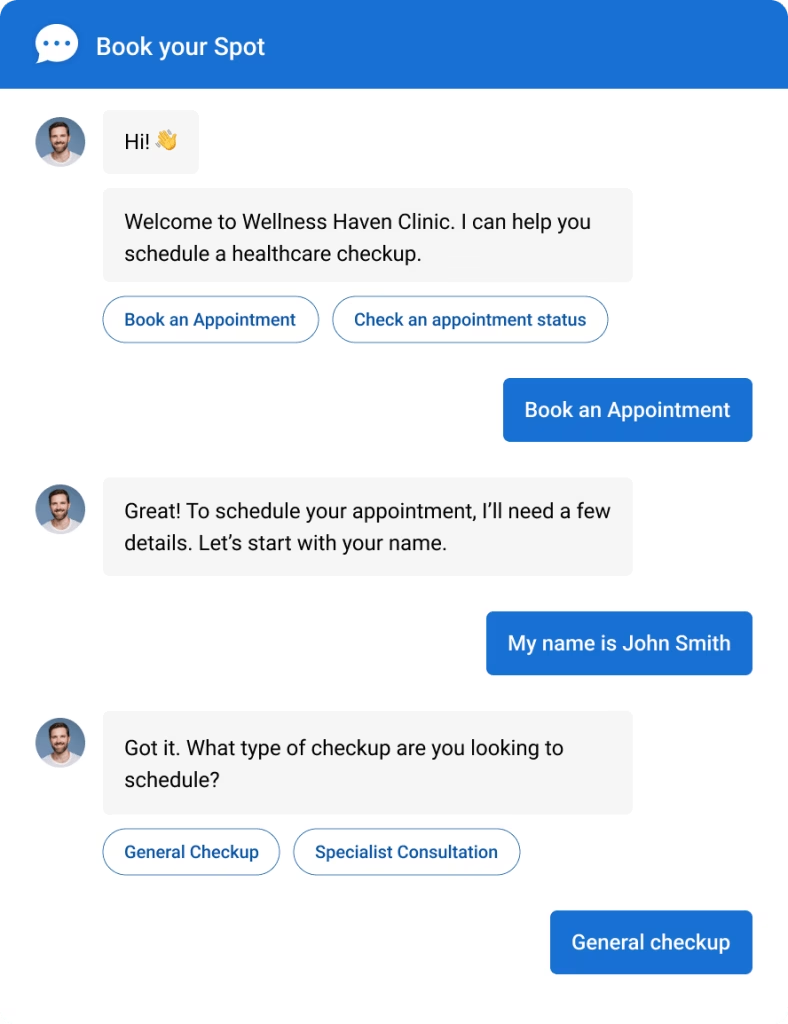
Chatbots can automate scheduling for doctors, salons, consultants, restaurants, and more. These bots are great at eliminating back-and-forth calls and automatically syncing with your calendar app.
For example, if you cancel an appointment on your calendar, the chatbot will follow up by notifying the customer of the change and offering an alternative time.
Key Use Cases of Appointment Booking Chatbots:
- 24/7 availability for scheduling so customers can book, reschedule, or cancel appointments anytime without human intervention.
- Automated reminders and notifications
- Service discovery and selection
- Calendar integration
- Multi-location support, so customers can book appointments at their preferred branch, office, or outlet.
- Payment collection during booking by integrating with payment gateways.
- Customer data collection and CRM updates
- Staff scheduling optimization by balancing workloads, assigning resources, and auto-allocating appointments.
- Personalized recommendations
12. Survey and Feedback Collection Chatbots
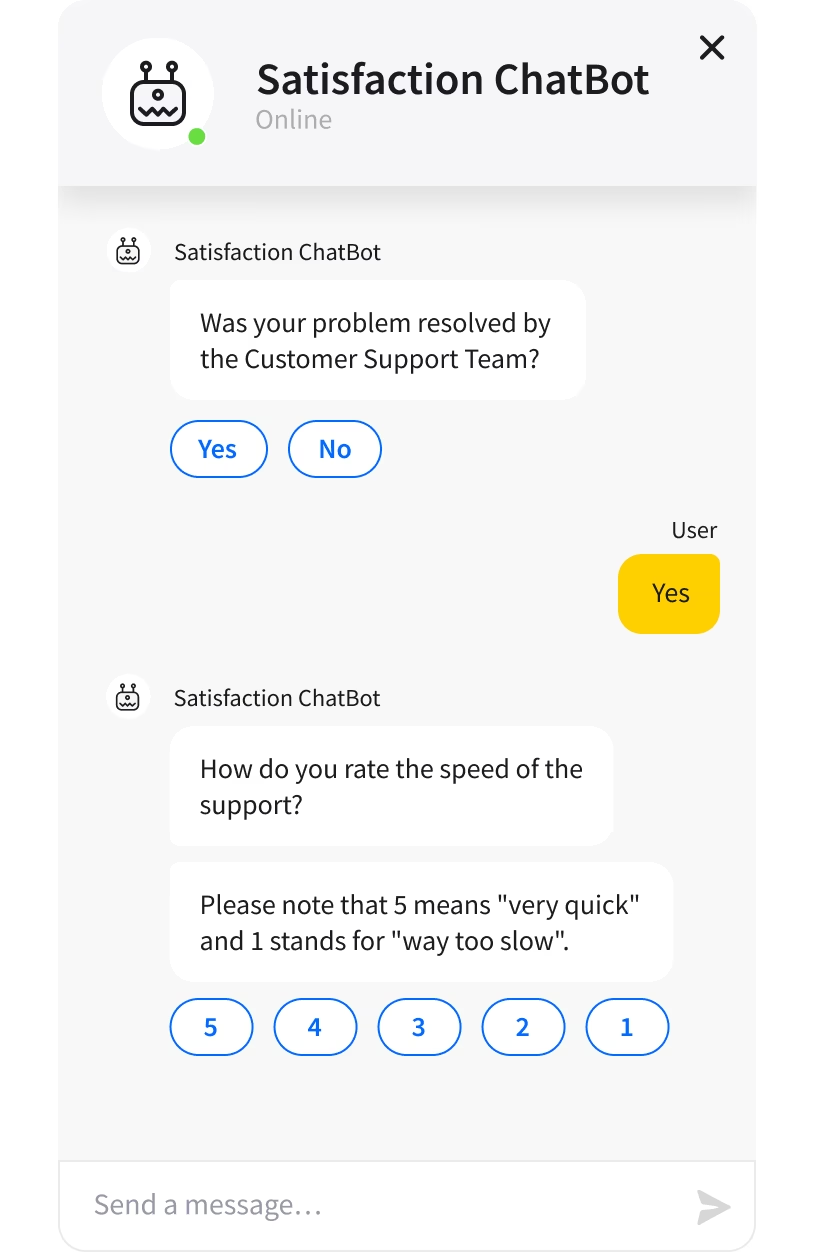
Instead of a boring web form, a chatbot can ask for feedback or run surveys in an engaging way. Which feels more natural than a blank survey page.
Businesses use these for customer satisfaction (CSAT) or net promoter score (NPS) surveys.
A chatbot can pop up right after an online purchase, ask a couple of quick questions, and record the answers.
Key Use Cases of Survey and Feedback Chatbots:
- Automatically trigger post-interaction surveys
- Customer satisfaction (CSAT) measurement through quick, conversational surveys embedded in chat flows.
- Employee engagement surveys
- Market research surveys
- Event or training feedback to measure participant satisfaction
- Real-time sentiment analysis
Final Thoughts
That concludes our list of the 12 key chatbot use cases for 2025.
Chatbots are becoming versatile tools across industries, from retail to healthcare to government. And evolving with AI, progressing from quickly answering questions and streamlining tasks to selling and entertaining customers.
The smart ones are backed by solid data and clear hand-off rules.
If you just want a reliable chatbot that can answer your questions using your own knowledge and provide human-like responses through AI integration, try Heroic AI Assistant.
It is affordable, easy to use, and robust enough for different industries.
That’s it for this guide. Do check our other guides on chatbots to learn more.
Further Reading
Top 10 Companies Using AI for Customer Service
10 Best AI Chatbot Plugins for WordPress (Free and Paid Options)
9 Best Restaurant Chatbots for Ordering, Reservations and Support
Chatbase Review 2025
How to Integrate ChatGPT with Your Knowledge Base
9 Best Wiki Examples to Get Inspired By
9 Service Desk Automation Ideas to Streamline IT Support

